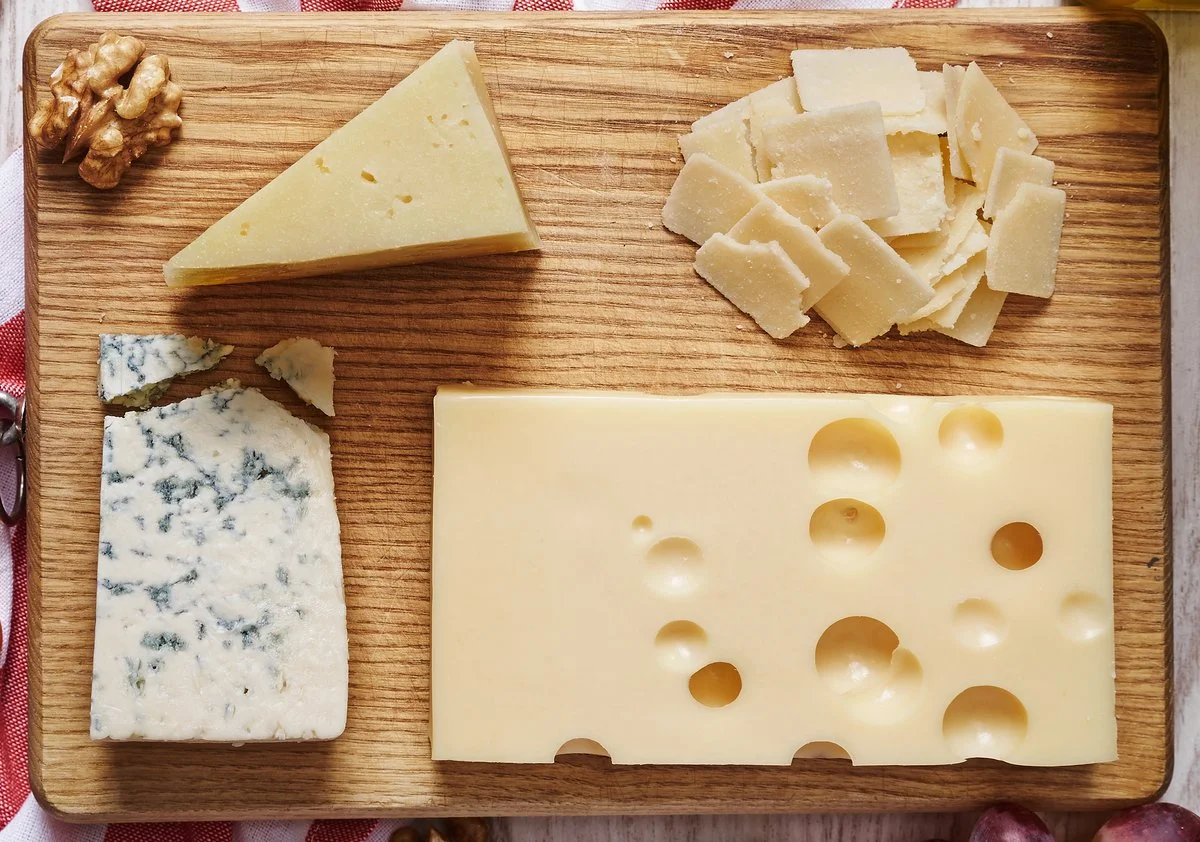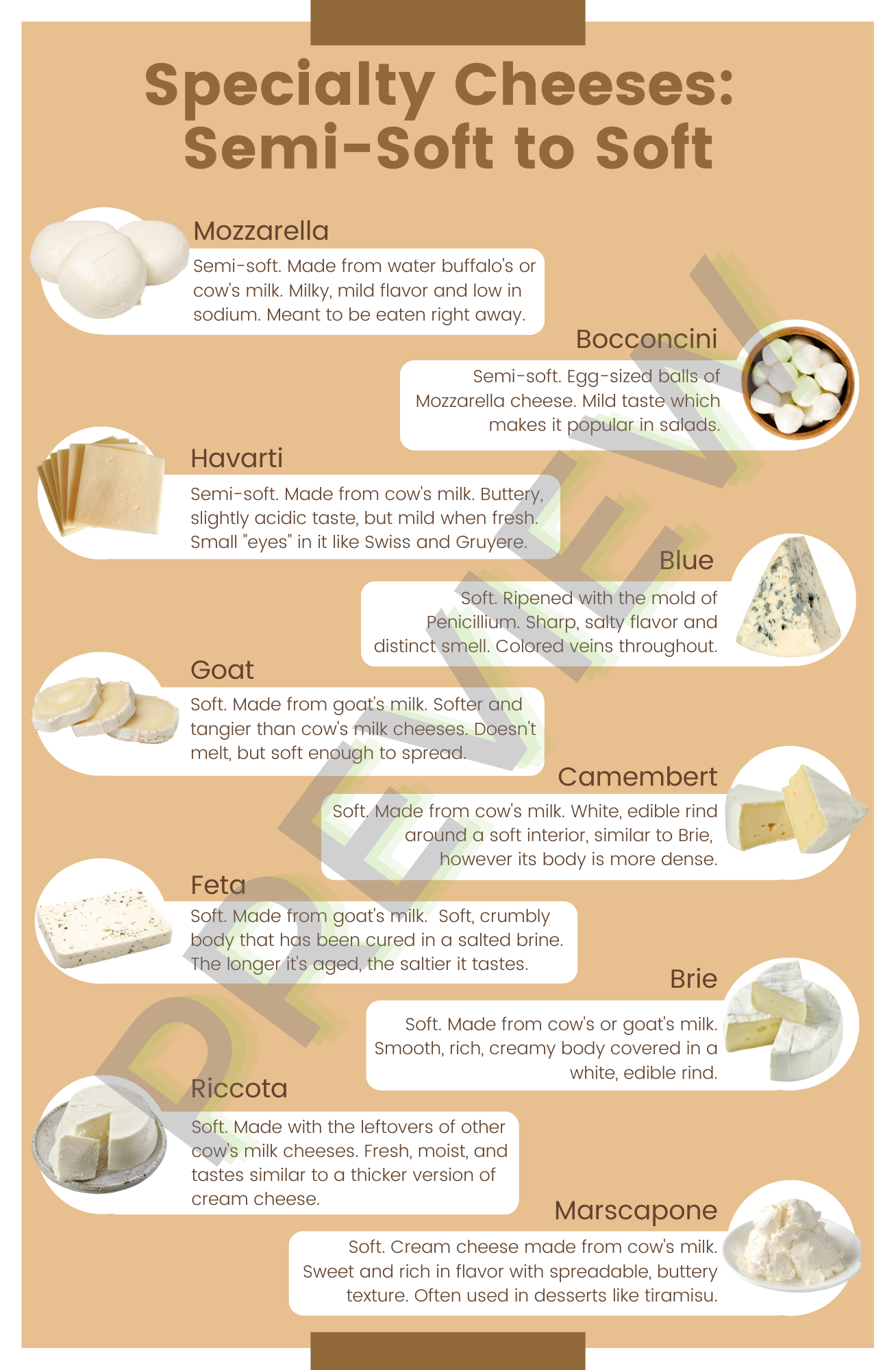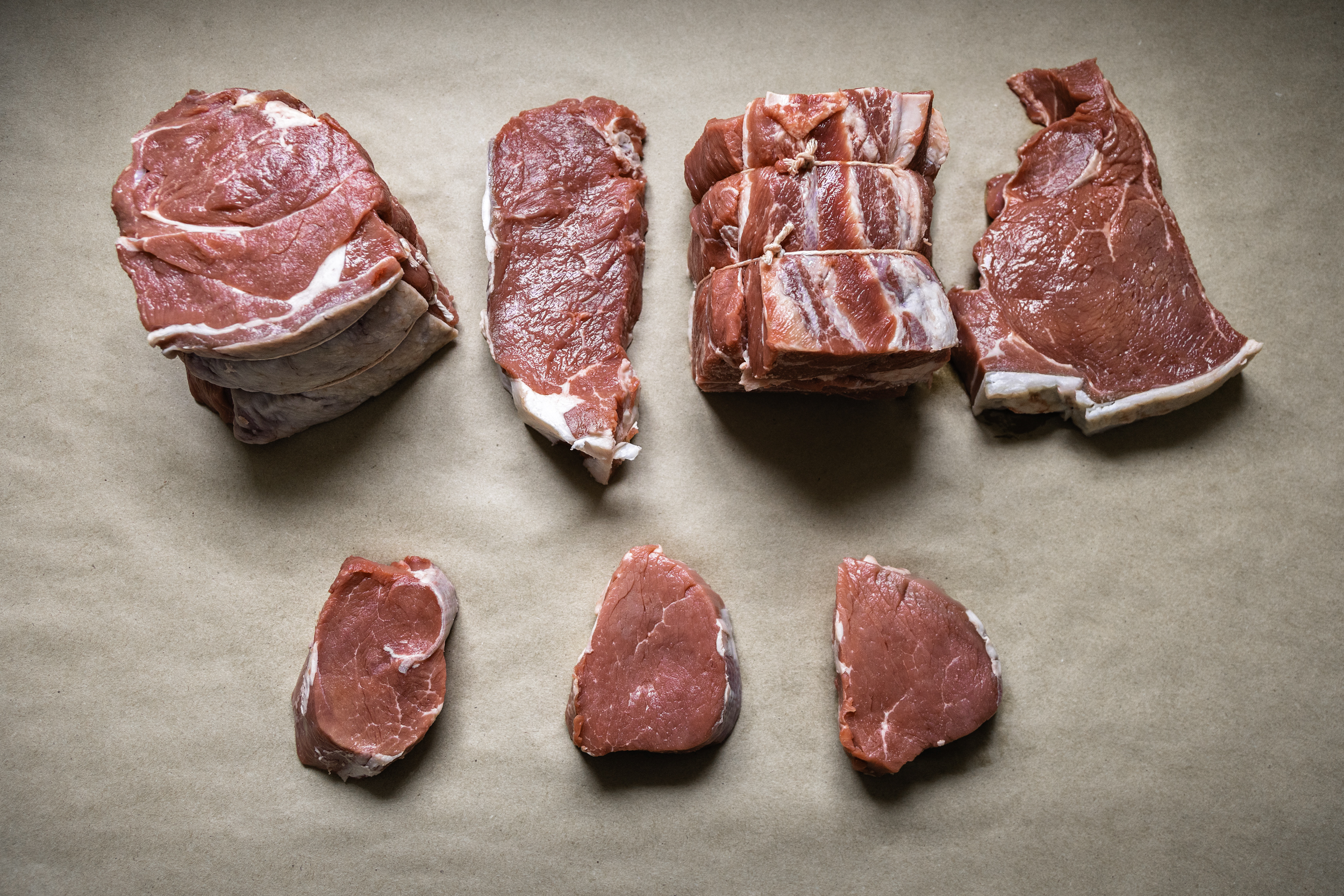Grocery Product Knowledge - Specialty Cheeses
Languages: English
Media Editing: This subject does not contain any editable media.
Description: Specialty cheeses are a main part of any grocery store's deli section. They are versatile due to their unique flavors, textures, and ingredients, and can be enjoyed on their own or paired with many dishes. In this subject, learners will be taught the main characteristics of popular specialty cheeses, varying from hard cheeses, like cheddar, to soft cheeses, like blue cheese. They will also learn how to properly wrap and store all kinds of specialty cheeses so their freshness is maintained.
Languages: English
Media Editing: This subject does not contain any editable media.
Description: Specialty cheeses are a main part of any grocery store's deli section. They are versatile due to their unique flavors, textures, and ingredients, and can be enjoyed on their own or paired with many dishes. In this subject, learners will be taught the main characteristics of popular specialty cheeses, varying from hard cheeses, like cheddar, to soft cheeses, like blue cheese. They will also learn how to properly wrap and store all kinds of specialty cheeses so their freshness is maintained.
Languages: English
Media Editing: This subject does not contain any editable media.
Description: Specialty cheeses are a main part of any grocery store's deli section. They are versatile due to their unique flavors, textures, and ingredients, and can be enjoyed on their own or paired with many dishes. In this subject, learners will be taught the main characteristics of popular specialty cheeses, varying from hard cheeses, like cheddar, to soft cheeses, like blue cheese. They will also learn how to properly wrap and store all kinds of specialty cheeses so their freshness is maintained.
Topics
Specialty Cheeses - Hard to Semi-Hard
-
Specialty cheeses come in many different varieties and hardness levels. In this topic, you’ll learn about the unique characteristics of hard to semi-hard cheeses found in your store’s deli, like Parmesan, aged Asiago, cheddar, Swiss, and more.
-
Questions (level 1, 2, 3)
PDF module (This module was created in a tool that is not supported by our Content Studio offering.)
-
This topic is currently available in English.
-
Parmesan is a hard cheese made from cow’s milk. It has a strong, sharp flavor and a hard, rough texture because it has been aged for a minimum of two years.
Pecorino Romano is a hard cheese that is made from sheep’s milk. It has a distinct, salty flavor and an off-white coloring. When it’s aged, it can be used as a replacement for Parmesan.
Aged Asiago is a hard cheese made from cow’s milk and generally tastes nutty and creamy. Its hardness and flavor depend on how long it’s aged, as it becomes harder and sharper-tasting as it ages.
Halloumi is a semi-hard cheese made from some combination of goat’s, sheep’s, or cow’s milk. It has a salty and tangy flavor and a rubbery texture. It keeps its shape when it’s heated, making it a rare substitute for other cheeses.
Swiss cheese or Emmentaler is a semi-hard cheese made in Switzerland from cow’s milk. It has a mild, creamy flavor and can be easily identified by its small holes or “eyes” in it. It is ideal for melting and is typically used in sandwiches.
Gruyere is a hard cheese made with cow’s milk. It’s similar to Swiss cheese in that it also originated in Switzerland and has small holes in it and has a creamy, slightly nutty flavor.
Gouda is a semi-hard cheese made from cow’s milk. It is wrapped in an inedible wax-coated rind and can vary in flavor. When it’s young, Gouda tastes sweet and buttery, but when it’s aged for over a year it tastes nutty and caramelized.
Cheddar is a hard cheese that’s made from cow’s milk. It’s one of the most popular cheeses in the world because of its versatile sharp, tangy taste. Cheddar cheese is naturally white but is often dyed orange.
Provolone is a semi-hard cheese made from aged cow’s milk. It has a slightly nutty flavor and the longer it’s aged, the harder and sharper-tasting it gets. It’s similar to Mozzarella but is aged for longer.
Manchego is a semi-hard cheese made from sheep’s milk. It has a high fat content and comes in both fresh and aged varieties, with the aged versions being firmer and crumblier. It also tastes zestier the older it gets.
Preview of PDF module for “Specialty Cheeses - Hard to Semi-Hard”.
Specialty Cheeses - Semi-Soft to Soft
-
Specialty cheeses come in many different varieties and hardness. In this topic, you’ll learn about the unique characteristics of soft to semi-soft cheeses found in your store’s deli, like goat cheese, Mozzarella, feta, and more.
-
Questions (level 1, 2, 3)
PDF module (This module was created in a tool that is not supported by our Content Studio offering.)
-
This topic is currently available in English.
-
Goat cheese is a soft cheese that’s always made from goat’s milk. It’s softer and tangier than cow’s milk cheeses. It also doesn’t melt but is soft enough to easily spread, making it a good substitute for ricotta and cream cheese.
Bocconcini are semi-soft egg-sized balls of Mozzarella cheese. They have a mild taste and are traditionally made from the milk of a water buffalo, although more recently cow’s milk has been used. Their size and taste make them popular in salads or served with prosciutto.
Mozzarella is a semi-soft cheese made from water buffalo’s or cow’s milk. It’s milky, very mild in flavor, and meant to be eaten right away since it isn’t hardened. Mozzarella is a good option for people who want a low-sodium cheese.
Brie is a soft cheese traditionally made from cow’s or goat’s milk. Its smooth, rich, creamy body is covered in a white, edible rind.
Camembert is a soft cheese made from cow’s milk. It’s very similar to Brie in that it has a white, edible rind around its soft, creamy interior. However, it’s denser than Brie.
Feta is a soft cheese made from goat’s milk. It has a soft, crumbly body that has been cured in a salty brine, and the longer it ages, the sharper and saltier it tastes. Feta should be avoided if a customer requires a low-sodium cheese.
Blue cheese is a soft cheese that has been ripened with the mold of Penicillium, which gives it a sharp, salty flavor and distinct smell. While there are many different types of blue cheese, each one will have green, blue, grey, or black veins or mold spots throughout. It is high in calcium but also high in sodium.
Ricotta is a soft cheese that’s made from the leftovers of other cow’s milk cheeses. It is fresh, moist, and tastes similar to a grainier, thicker version of sour cream.
Mascarpone is a soft cream cheese made from cow’s milk. It is sweet and rich in flavor and has a spreadable, buttery texture. It’s often used in desserts like tiramisu.
Havarti is a semi-soft, smooth cheese made from cow’s milk. It has a buttery, slightly acidic taste, but is mild when it’s fresh. Like Swiss and Gruyere, it also has small holes in it.
Preview of PDF module for “Specialty Cheeses - Semi-Soft to Soft”.
Storing Specialty Cheeses
-
Once specialty cheeses are purchased, it’s important for their longevity and food safety purposes that they’re properly stored. In this subject, you’ll learn how and where to store specialty cheeses of every hardness, as well as what to do if mold forms on different types of cheese.
-
Questions (level 1, 2, 3)
PDF module (This module was created in a tool that is not supported by our Content Studio offering.)
-
This topic is currently available in English.
-
All cheeses (except fresh cheese) should be wrapped and stored in cheese paper, waxed paper, or parchment paper. This allows some air to reach the cheese so it doesn’t become too moist.
Fresh cheese that doesn’t have a rind, like Ricotta, should be stored in an airtight container. If too much air reaches these cheeses, they’ll risk drying out.
After it’s properly wrapped, cheese should be stored in the produce drawer of the refrigerator. This is because the produce drawer is slightly warmer with better humidity.
While cheese is better served fresh, it is possible to freeze cheese. However, it’s recommended to use frozen cheese for cooking since it will be much drier when it’s thawed.
Hard cheeses are more suited to be frozen than soft cheeses because their texture will be less affected by being frozen.
If you notice some mold has developed on hard or semi-hard cheese, like Parmesan, gouda, or cheddar, cut one inch around the mold and remove it. Then, the rest of the cheese is still safe to eat.
Semi-soft and semi-hard cheese should be tasted and smelled immediately after purchase. This makes it easier to know when it’s gone bad, since it’s not always obvious with some cheeses.
Soft cheeses, like goat cheese, and fresh cheeses, like ricotta, should be thrown out once mold begins developing. Since these cheeses are moist and soft, the mold spreads much quicker than on harder cheeses.
Most cheeses can safely sit at room temperature for 2-4 hours, with hard cheeses being able to last slightly longer because of their lower moisture content.
Preview of PDF module for “Storing Specialty Cheeses”.









